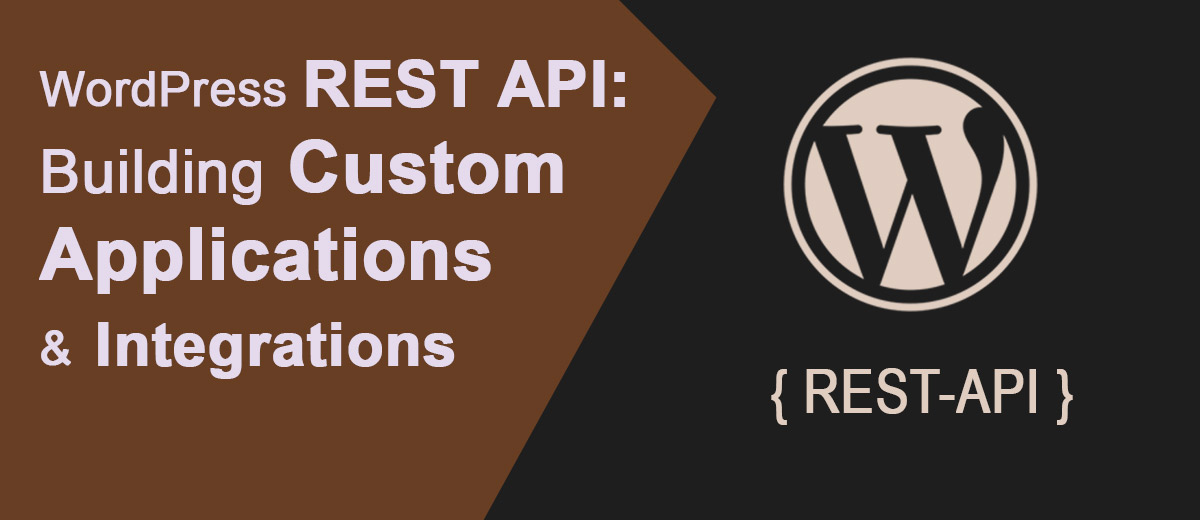WordPress, one of the most popular content management systems, has evolved beyond a traditional blogging platform to become a robust application framework. The introduction of the WordPress REST API has played a pivotal role in this transformation, enabling developers to build custom applications and integrations that extend the functionality of WordPress beyond the standard web interface. In this article, we’ll explore the WordPress REST API, its capabilities, and how developers can leverage it to create powerful, customized solutions.
Understanding the WordPress REST API
The WordPress REST API allows developers to interact with a WordPress site programmatically. Instead of relying solely on traditional server-side requests, the REST API enables communication through HTTP requests, opening up possibilities for creating dynamic and interactive web experiences. Key features of the WordPress REST API include:
- Data Access: Retrieve data from a WordPress site, including posts, pages, comments, users, and custom post types, using standardized RESTful endpoints.
- Data Manipulation: Create, update, and delete content on a WordPress site programmatically, enabling seamless integration with external applications.
- Authentication: Implement secure authentication mechanisms to control access to sensitive data and actions on the site.
- Custom Endpoints: Extend the default REST API by creating custom endpoints tailored to specific use cases.
Building Custom Applications with the WordPress REST API
1. Headless WordPress Websites:
Embrace the concept of a headless WordPress setup, where the WordPress backend serves as a content repository, and a separate frontend application consumes this content through REST API calls. This approach provides flexibility in designing frontend experiences using frameworks like React, Vue.js, or Angular.
2. Mobile Applications:
Develop custom mobile applications that fetch and display content from a WordPress site. Mobile apps can leverage the REST API to retrieve posts, pages, media, and other relevant data, providing users with a seamless mobile experience.
3. E-commerce Integrations:
Extend WordPress e-commerce sites by integrating with external services, payment gateways, or inventory management systems. The REST API facilitates secure communication between the e-commerce site and third-party applications, ensuring smooth transactions and order processing.
4. Interactive Web Experiences:
Enhance user engagement by creating interactive web experiences using JavaScript frameworks. By making asynchronous requests to the REST API, developers can dynamically load content, update data, and create immersive user interfaces.
Leveraging Custom Endpoints
Developers can go beyond the default REST API endpoints by creating custom endpoints tailored to specific project requirements. This involves registering a new route and defining callback functions to handle requests. Custom endpoints are useful for scenarios such as:
- Data Aggregation: Combine data from multiple default endpoints to create a consolidated response, reducing the number of API calls.
- Specialized Queries: Implement custom queries to retrieve data based on specific criteria that may not be covered by default endpoints.
- External Integrations: Create endpoints that serve as bridges between the WordPress site and external services, allowing for seamless data exchange.
Authentication and Security
Securing access to the WordPress REST API is crucial, especially when dealing with sensitive data or performing actions that modify the site. WordPress provides various authentication methods, including cookie authentication, application passwords, and OAuth 1.0a and 2.0, to ensure secure interactions with the API. Developers should choose the authentication method that aligns with the specific requirements of their projects.
Conclusion
The WordPress REST API opens up a world of possibilities for developers to create custom applications and integrations, transforming WordPress into a versatile and extensible platform. Whether building headless websites, mobile applications, e-commerce integrations, or interactive web experiences, the REST API provides a standardized and efficient means of communication with a WordPress site. As the web landscape continues to evolve, the WordPress REST API remains a powerful tool for developers seeking to innovate and tailor WordPress to meet the unique needs of their projects.


